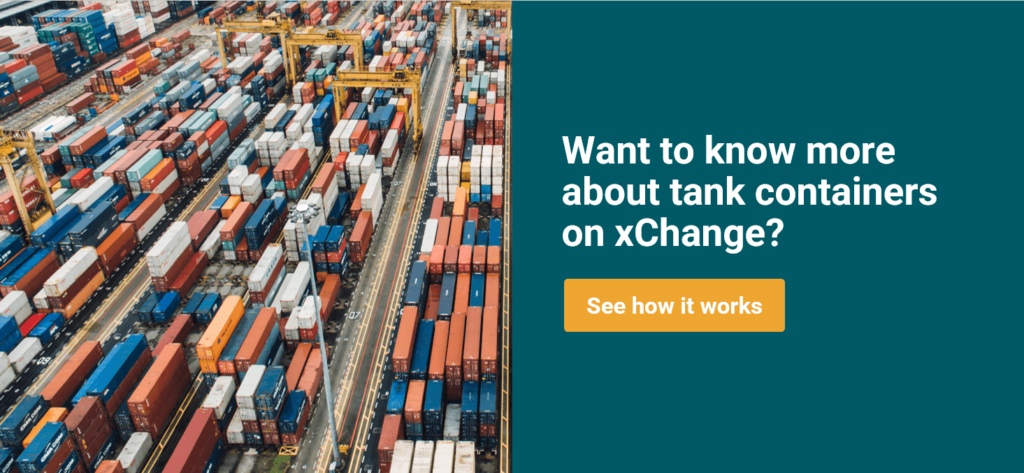There are various intermodal tank types available in the market and each for a specific purpose. If you’re unsure which type fits your needs the best, this is your guide right here.
Do you know, the use of intermodal tank containers (for bulk transportation of liquids, gases, and powders) is the fastest-growing mode of shipment? These ISO-certified tank containers can carry both hazardous and non-hazardous goods efficiently and with all safety – making them a popular choice among shippers.
ISO tank specifications
ISO tank containers, specifically carry different liquids such as explosives, chemicals, flammable, and food. These tanks provide a safe and secure way of transporting liquids and are cost-effective as well. They also remove the hassle of transferring the product from one container to another.
The most common type of ISO tank container is the 20 ft size. It can carry up to 26,000 liters of liquid. Below is the general specification of a standard intermodal ISO tank container:

Different intermodal tank types
The International Maritime Dangerous Goods Code (IMO) classifies tank containers into IMO Type 1, IMO Type 2, and IMO Type 5. All three categories can transport hazardous products of varying “dangerous” levels. This helps in understanding which or what liquids or gases can be transported in a particular tank container.

IMO Type 1
Tank containers allow transportation of hazardous materials such as explosives, highly flammable toxins, and corrosive substances. You can use this type of tank for shipping liquids with a flashpoint of less than 0-degree Celsius (below 32 degrees Fahrenheit). In an IMO Type 1 tank, the discharge outlet can be both on the top and the bottom.
IMO Type 2
You can use IMO Type 2 tanks for low hazardous chemical liquids such as diesel, herbicides, insecticides, cooking oil, or alcoholic beverages. The flashpoint must be 0 to below 61 degrees Celsius (32 degrees Fahrenheit to 142 degrees Fahrenheit). The discharge outlet is generally at the bottom of the tank.
IMO Type 5
To transport non-refrigerated liquified/flammable gases such as propane, butane, tank containers are the ideal choice for transportation. They’re referred to as gas tanks. Type 5 tanks have a mounting arrangement to suspend the tank on the container. It helps restrict movement or friction between the tank and the frame. Due to the highly hazardous materials, it carries, Type 5 tanks come with special operating instructions.
Note: Apart from the above three IMO tank types, there is also an IMO type 7 tank container designed and approved to carry cryogenic or refrigerated liquid such as oxygen, nitrogen, carbon dioxide, and so on.

The IMO type was the original system of classification but this was replaced by the “T” code system in 2001.
This is helpful because it includes more specific details such as test pressure, shell thickness, pressure relief set up, and outlet arrangement (both top and bottom). The “T” code identifies tank containers from T1 to T22. And also defines the type of cargo each container can transport.
**The “T” code system classification

Note: The ISO tank containers adhere strictly to the international codes for safety while carrying any kind of liquid by land or sea.
The system classifications – IMO and the “T” code help shippers understand what goods to ship and in which category of the tank. The benefit of intermodal tank types are seen throughout the movement and handling of the cargo till the end.
ISO Tank container handling
The cylindrical vessel usually sits on a 20ft ISO frame. They are designed in a way that they can be stacked on top of one another during transportation. This makes the whole process cost-effective with more shipping capacity.
You can load and unload a tank container from both the top and the bottom (depending on the type). In a standard tank container, there is a vent and a valve on the top and bottom; a hose connected to the valve helps with the loading and unloading process.
Tank containers are designed keeping in mind the kind of products they ship – thus safety is always the priority. Every time you unload a container, it undergoes many tests. They’re also inspected before the next cargo is loaded.
A few things to keep in mind about intermodal tank type:
- You shouldn’t use chemical-grade tank containers to transport food-grade cargo (even after thorough cleaning).
- Each tank container go through thorough cleaning and inspection after cargo is unloaded and before the next shipment.
- Every tank should be 80% full (to avoid surge) and less than 95% full (for thermal expansion).
You design ISO intermodal tank containers to be safer and ensure seamless shipment of hazardous and non-hazardous cargos. It also reduces the impact on the environment during transportation.
If you are looking for tank containers or want to buy or lease them, Container xChange provides a neutral marketplace where you can find, buy or lease tanks from around the globe.

![Understanding intermodal tank types: All you need to know [2024]](/_next/image?url=%2Fblog%2Funderstanding-intermodal-tank-types-all-you-need-to-know-2021-featured.jpg&w=1920&q=75)